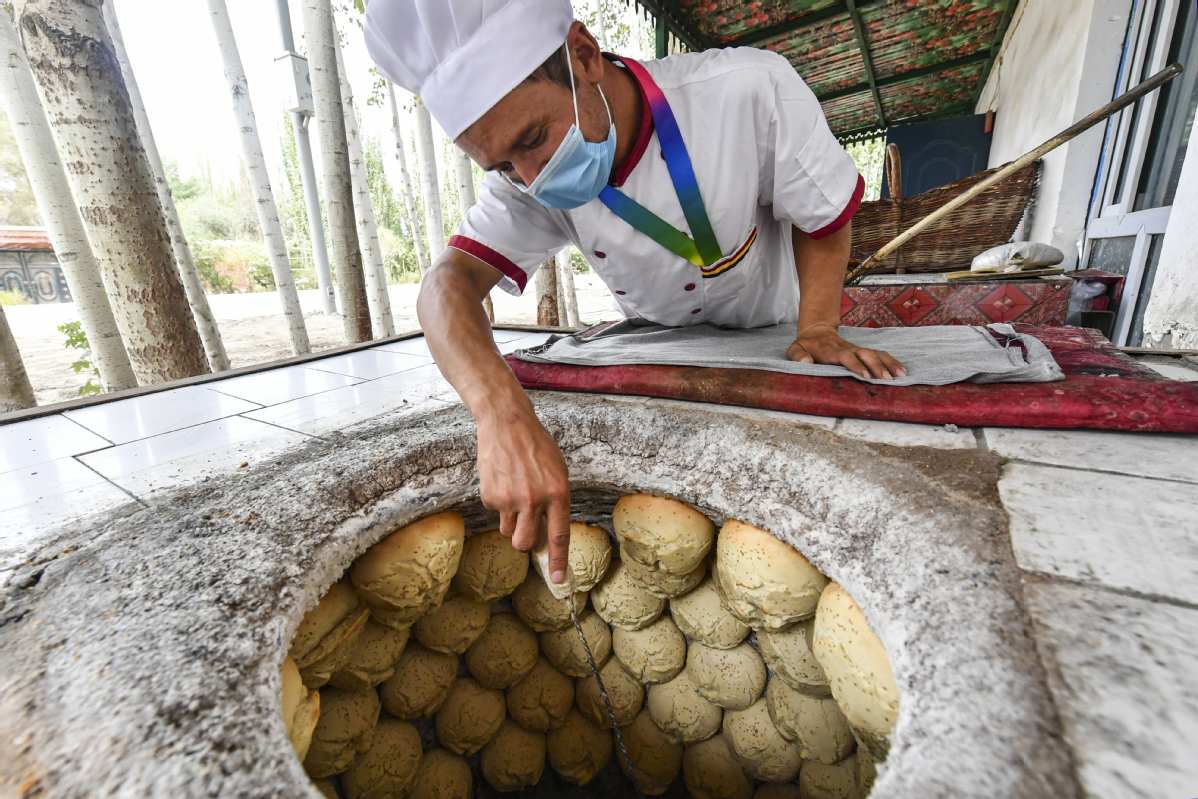Humble nang becomes big business for Xinjiang bakers
By CUI JIA in Kashgar, Xinjiang | CHINA DAILY | Updated: 2020-09-25 07:25

The industrial park now has 402 nang pits and 1,200 employees. With the help of electric nang pits that can be heated up quickly, it can currently produce an average of 300,000 nang a day. Meanwhile, its branding and online marketing team ensures that the industrial park distributes more than 100,000 nang a day to other parts of China.
As a nang master baker of his village, Ark quickly worked his way up to the position of production supervisor. His monthly income is double what it was when he ran a small nang bakery in his village. "More than 690 employees here are from impoverished families in nearby villages. We are all glad to have the opportunity work near home and make our life better while promoting the staple food of the Uygurs," Ark said."People keep asking me if there are vacancies in the industrial park."
According to research on Xinjiang's nang industry, more than 9,500 jobs have been created in the nang industry in Kashgar.
In addition, due to the similarity in diet between Xinjiang and neighboring Central Asian countries, nang also has potential in Central Asian markets as Xinjiang is positioned as the core region on the Silk Road Economic Belt.
Collective strength
After winning the gold medal and being inspired by other nang master bakers, Abdulxukuer shared his idea of opening a nang cooperative with his fellow villagers and village officials. "Ten villagers have already decided to join. The village committee has offered land to set up a small nang factory. It will also help us to sell our nang online. Although it's a bold move, the opportunity is too good to miss," he said.
Abdulxukuer, who started to learn how to bake nang when he was 16, said he will keep his traditional bakery to serve the villagers and travelers while running the cooperative, which will use electric nang pits. "There is no conflict in embracing new changes and preserving traditions. My nang will remain unique and delicious," Abdulxukuer said.
Xinjiang has nurtured and strengthened labor-intensive industries with distinctive strengths, such as nang and textiles. Therefore, people, especially those in areas of extreme poverty, can find work in their locality. Meanwhile, the region has also seized development opportunities brought by the Belt and Road Initiative to diversify its industrial structure.
From 2014 to 2019, the total number of people employed in Xinjiang rose from 11.35 million to 13.3 million, an increase of 17.2 percent, according to the regional government.
With the implementation of a series of employment policies, the goal that "each household has access to job opportunities, each person has work to do, and each month goes with an income" has largely been achieved. Profound changes have taken place in the life, work and mentality of the people of all ethnic groups in Xinjiang, and particularly in southern Xinjiang, according to a recently published white paper on employment and labor rights in the region.
























